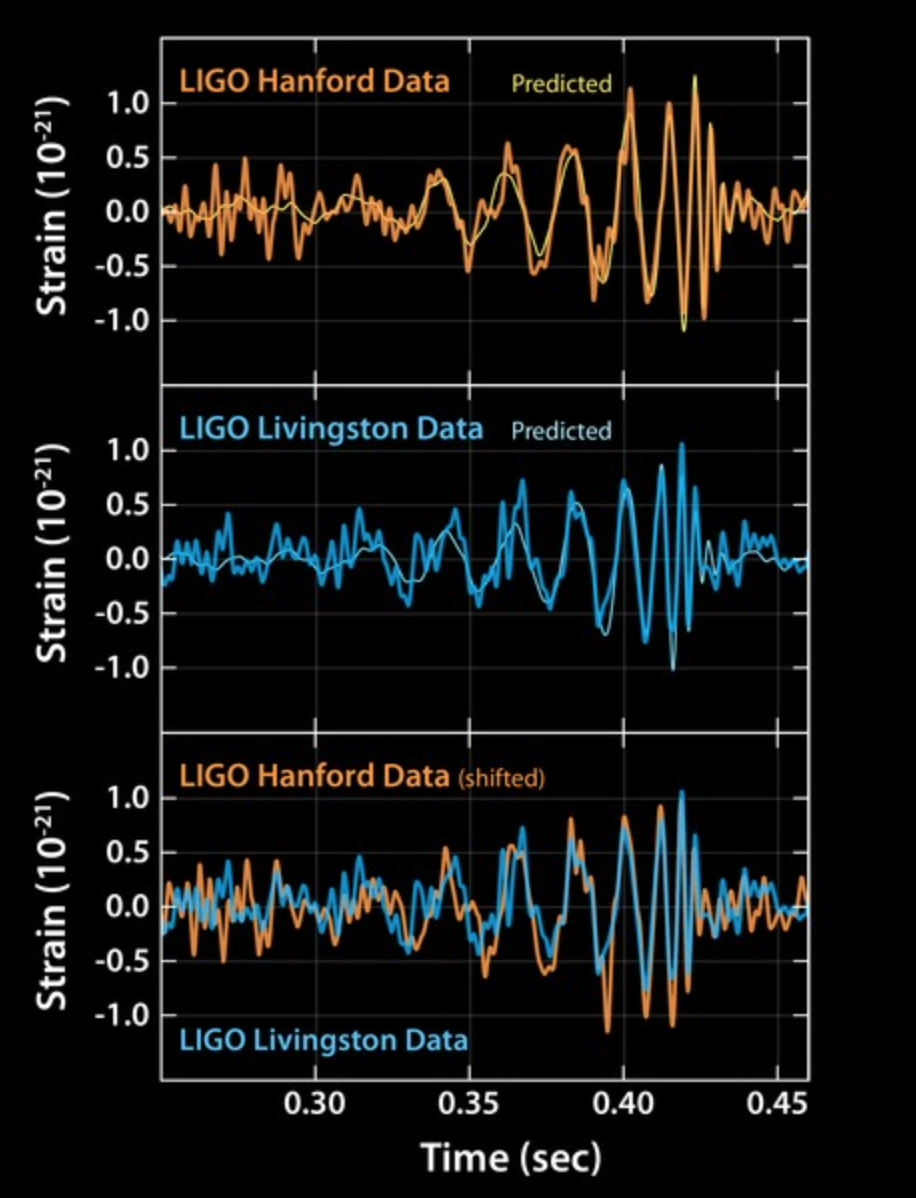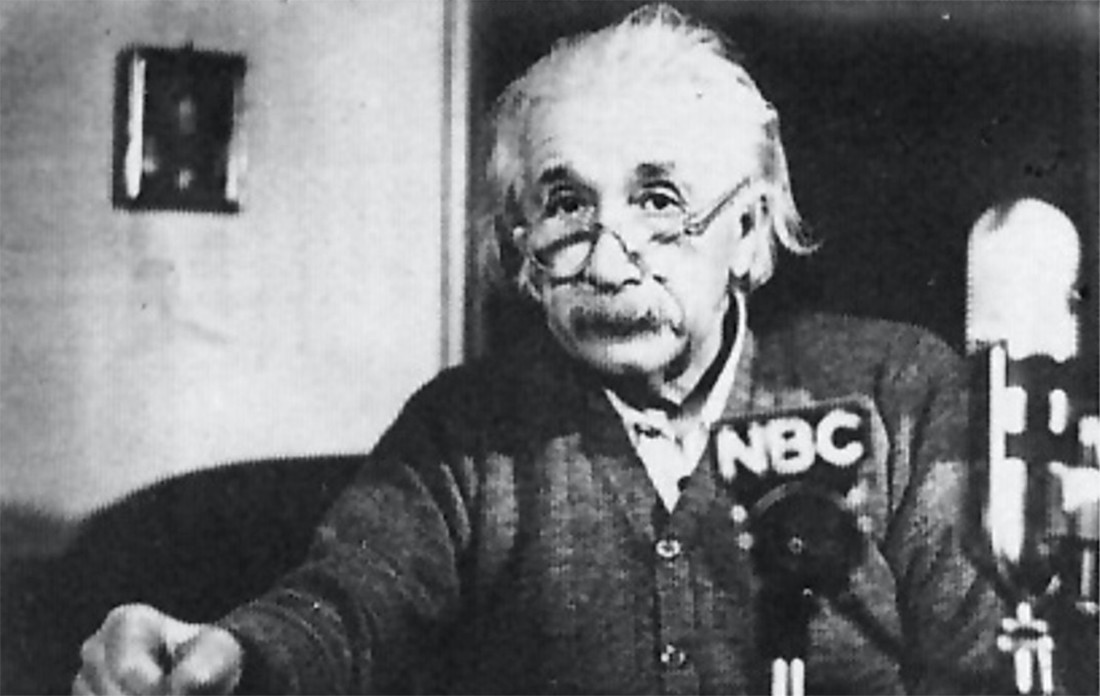By Danielle Prieur
Scientists detected the gravitational light waves from two colliding black holes more than a billion light-years away.
That means it took more than a billion years for that light to reach detectors on Earth. Yet the timing was perfect for physicist Gabriela Gonzalez, a professor at the Louisiana State University’s Department of Physics and Astronomy. She talked about the discovery Friday in Washington D.C. where thousands of scientists gathered for the conference of the American Association for the Advancement of Science.
She is one of more than 1,000 authors in the LIGO Scientific Collaboration who announced they had detected gravitational waves in a paper published in the journal Physical Review Letters on Thursday. The LIGO researchers included astrophysicists at Northwestern University.

“It’s not a search, it’s the actual observation of gravitational waves,” as predicted by Albert Einstein a century ago.
Gonzalez said they were able to map their approximate location in the galaxy, and to listen to what a gravitational wave sounded like, essentially listening to a time capsule from billions of years ago.
She described listening to the gravitational waves as having “ears in the universe” at AAAS. “We’ll begin listening to the universe,” she earlier told BBC.
The collision of black holes generated a warping of space time. “Fitting it to wave forms” shows that the fit is consistent with Einstein’s theory of general relativity, announced in 1915.
Gonzalez said that Einstein’s theory was revolutionary. It suggested that “if you have two stars orbiting around each other” the distortion of space time that’s being produced travels away from the system and dissipates energy with it. “Einstein’s theory will tell you that the two stars will get closer and closer together because gravitational waves carry away the energy.”
The detection of these waves confirm what Einstein predicted over 100 years ago: when two black holes come in contact, gravitational waves are produced.
Although black holes have been observed before, “these are the first gravitational waves observed from Earth,” Gonzalez said.
The global LIGO Collaboration involves laboratories around the world that have been searching for decades for gravitational waves.
“Gravitational waves provide a completely new way at looking at the universe. The ability to detect them has the potential to revolutionize astronomy,” said astrophysicist Stephen Hawking in an exclusive interview with BBC News. “This discovery is the first detection of a black hole binary system and the first observation of black holes merging.”
So how did LIGO do it?
“The first thing is you try to calculate how big the [waves] are and they you need to find a device that can measure those distortions,” said Gonzalez.
After creating templates for what a gravitational wave produced by two black holes merging, scientists built NSF-funded devices called advanced interferometers to detect the waves.
LIGO stands for the Laser Interferometer Gravitational-Wave Observatory.
“It has a laser beam that is split in two, and it travels in perpendicular arms which bounce back from a mirror,” Gonzalez said. “When they come out of the interferometer, the two magnetic waves interfere with each other. If you measure the amount of light produced, you can tell the difference in distance.”
In order to build a more advanced interferometer, Gonzalez said they used special mirrors that, “essentially make the light go back and forth about a hundred times, essentially making it about 100 times more sensitive than it would be.”
These interferometers had to be sensitive enough to measure the “one thousandth of a proton” distortion caused by gravitational wave GW150914 as it reached Earth, named for “a day [September 14] which thousands of us will always remember,” Gonzalez said, “When you see something that grows and oscillates and its oscillations grow in amplitude and frequency, you see the cycles are getting shorter and then they reach a peak amplitude and then they go down.”
Although it’s not the first time that the interferometers have measured similar patterns of oscillations, Gonzalez said it was clear this pattern was not caused by “noise” or “artifacts” from the detectors as they had been on previous occasions.
“I don’t remember any of those artifacts looking like this,” Gonzalez said. “However, what convinced us is that 7 milliseconds later we saw the exact same thing in very similar wave form in the Hartford detector.”
The fact that two interferometers, 3,000 kilometers apart, had the same reading, and that an extrapolation of the measurement over five additional seconds did not fit the pattern, suggested it was a gravitational wave.
Graphs of LIGO date from Hanford and Livingston

After confirming that they had detected a gravitational wave, Gonzalez said LIGO went about calculating the energy that had been created by their “merger” and most interestingly, how long ago the merger happened.
Although measurements were taken from August through January of this year, September is when the gravitational waves were observed.
She said this will be the first of many discoveries as technology advances at LIGO and around the world for detecting gravitational waves.
“This is the beginning now we now we have two detectors that can analyze binary black holes. In the meantime, detectors are being tweaked, performance is being improved later this summer we expect the Vigo detector in Italy to join the network,” Gonzalez said. “So now we were not only two ears we will have three we will be able to triangulate.”
Gonzalez said the possibilities are endless as, “You have many different wavelengths and the difference in those is the frequency and the wavelength. The same happens with gravitational waves,” said Gonzalez.
“There are gravitational waves that are produced by bigger black holes, galaxies colliding and those gravitational waves take minutes to hours and those would be detected by a space detector which we hope flies sometime in the next decade.”
Don’t expect such monumental discoveries every month, she said. But we should be able to expect one every year as we continue to prove Einstein’s theories and explore our universe.


